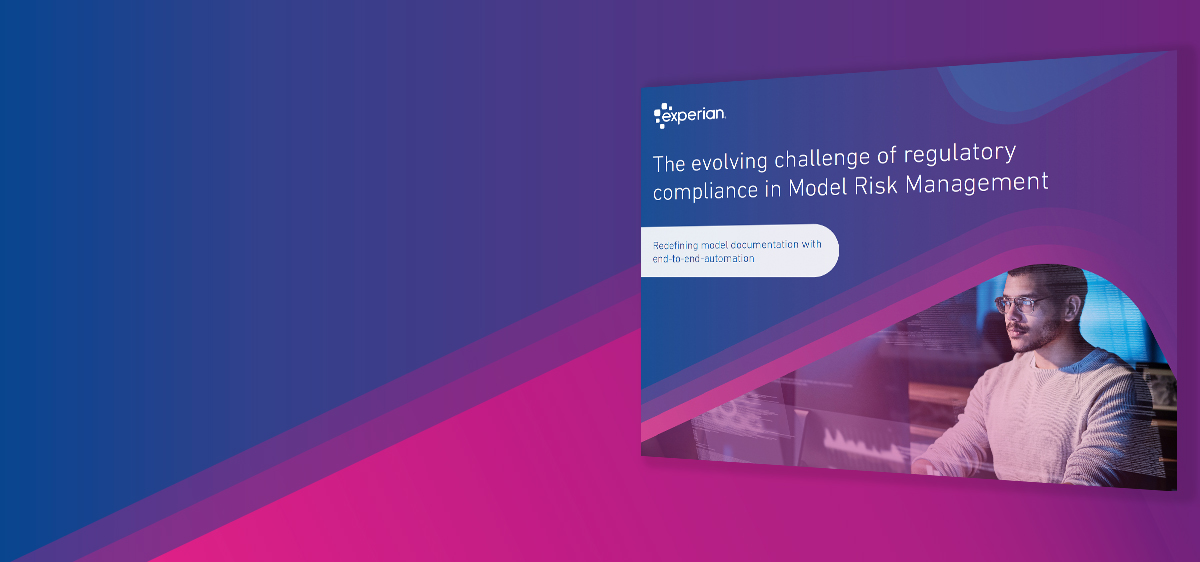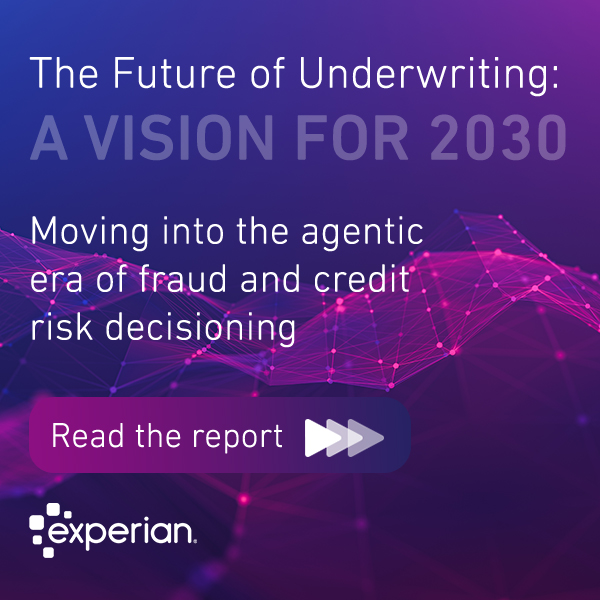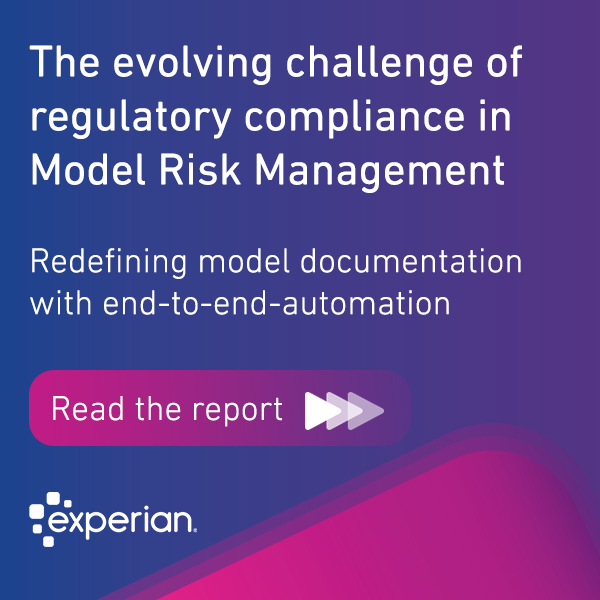Search Results for: DATA AI

Due to Covid-19 , the focus on analytics and artificial intelligence (AI) has significantly increased. However, while companies have made significant investments in AI, many are struggling to show a tangible impact in return. One executive commented, “We have data science teams and a data lab where advance techniques like neural networks, GANs, etc. are successfully being used. However, less than 10% of our actual operational decisions and products are powered by AI and machine learning (ML). I would like us to be driving greater measurable impact and Covid-19 is exposing some of our execution gaps.” And, he’s not alone. Despite the investment, the true impact is elusive, and many businesses are not getting the desired effect from their efforts. Achieving the results needed to justify continuous investment will take a holistic approach. So, what can companies do to achieve this impact? The four pillars of holistic AI: performance, scaling, adoption and trust Achieving impact from AI requires taking a more holistic approach across four pillars — beyond just the delight of the data scientist producing a better performing model. 1. AI performance — outperforming the status quo and quantifying the impact This pillar is where most data scientists and companies tend to focus first, for example using modern AI techniques to create an underwriting model that performs better than traditional models. The so-called ‘data science moment of truth,’ where the data scientist declares that he has built a model which outperforms the status quo by 10%. However, it’s important to note model performance alone is not sufficient. We should look beyond the model to understand business performance. What quantifiable business impact does the 10% improvement deliver? How many more credit approvals? How much lower will the charge-off rate be? This reasoning provides the important business context around what the incremental performance means. 2. AI scaling — having the right technical infrastructure to operate models at scale This area is often ignored. The risk with data science teams is they can see their job as being completed with creating a better performing model. However, that’s just the beginning. The next important step is to operationally deploy the model and setup the operational infrastructure around it to make decisions at scale. If it is an underwriting model, is it deployed in the right decisioning systems? Does it have the right business rules around it? Will it be sufficiently responsive for real-time decision making, or will users have to wait? Will there be alerts and monitoring to ensure that the model doesn’t degrade? Are there clearly defined, transparent and explainable business strategies, and technology infrastructure and governance to ensure all stakeholders are aware? Is the regulatory governance around this model in place? Does the complexity in the model allow it to scale? Too often we see data scientists and data labs create great models that can’t scale and are impractical in an operating environment. One banking executive shared how her team had developed 5 machine learning models with better performance, but were in ‘cold storage’ verse in use, because they didn’t have the ability to scale and operationally deploy them effectively. 3. AI adoption — ensuring you have the right decisioning framework to help translate business decisions to business impact With better performing predictive models and the right technology, we now need to present the information in a way that is ‘human-consumable’ and ‘human-friendly.’ At one bank, we found they built a customer churn ML model for their front lines, but no one was using it. Why? They didn’t have the contextual information needed to talk to the customer — and the sales force didn’t have faith in it — so didn’t adopt it. Subsequently, they built a model with a simpler methodology and more information available at their fingertips — where decisions could be made. This was immediately adopted. This pillar is where the importance of decisioning tools is highlighted. The workflow and contextual information to allow a decision to be orchestrated and made is critical in driving AI adoption. 4. AI trust – having governance, guardrails and the appropriate explainability mechanisms in place to ensure models are compliant, fair and unbiased This final pillar is probably the most important for the future of AI — getting humans to trust it. In recent times we have seen numerous examples like the Apple Card, where the underlying principles and models have been called into question. For scalable AI impact, we need an entire ecosystem of people who can trust AI. To achieve this effect, you need to consistently apply the right principles over time. You also need the right decisions to be explained — like adverse action calls. Explainability capabilities help manage communication and understanding of advanced analytics, contributing to established AI trust. And, when fairness and bias issues come up, you need to provide good answers as to why decisions were made. AI is poised to fundamentally change the way we do business, and studies show that $3 to 5 trillion in global value annually, up to $15 trillion by 2030, is likely to be created. We believe the four pillars highlighted above will be key to accelerating the journey to driving positive results and capturing this value. At Experian, we are making investments to drive impact for our clients by delivering against these four pillars. Related articles: What is the right approach to AI and analytics for your business? Four fundamental considerationsHow rapidly changing environments are accelerating the Need for AI What’s new in online payment fraud Part 2: How AI and evolving regulation are driving change

In this episode of the Insights in Action podcast we talk to Neil Stephenson, Vice President of Strategic Client Development, about how businesses can address a lack of data. Following an earlier episode tackling business data challenges, we discuss getting value from the data your organization already has access to, tackling legacy software issues, the accelerated shift to customer-centric technology stacks, and an increase in industry partnerships to solve common challenges. Nearly a third of senior business leaders say they don't have enough data to get insights they need, or that the quality of the data they have access to is poor. We take a look at the three steps businesses need to take to address this challenge, starting with the quality of data already in the business. "We see a number of organizations that have pretty powerful data within their own business but don't leverage it as well as they could, so matching data together and making sure they've got a really strong view of their customer across all of their systems is really essential, and then having processes ongoing to make sure that they maintain that view whenever they touch the customer, whether that be through an online channel or face to face." Neil Stephenson, VP, Strategic Client Development Listen to the full episode here, and look back at the previous in the series, Solving key business data challenges - with Bill O'Connell, Experian Global Decision Analytics

In a recent piece for the Forbes Technology Council, Businesses Need to Modernize Their Approach For Delivering Digital Experiences, I shared how the current rapidly changing environment has greatly accelerated the shift from offline to digital interactions. As businesses experience a need for heightened governance and controls, they must look towards technologies such as artificial intelligence (AI) and machine learning, coupled with access to data in real-time, to move forward. According to the report Experian commissioned Forrester Consulting to conduct, 53% of businesses struggle to make consistent customer decisions. Additionally, only 29% of businesses believe they do a good job of connecting analytics to action. When applying AI and machine learning to customer experiences, there are some concerns that businesses must keep in mind. The first is legal implications and privacy protections, which must always be a priority. The second is to combine analytics models with real-time decisions so that predictions can be harnessed and put into action in real-time. As more and more businesses shift to fully digital experiences, they must learn how to apply their vast amounts of data to models that can help inform the newly remote customer experience. If interested in the topic of businesses’ modernized approach to digital experiences, you can find the full article here.

Recently we commissioned Forrester Research to look into senior executives’ perceptions on key business data challenges and the importance of achieving a holistic view of their customers. This research uncovered that nearly a third of business leaders worldwide say they don't have enough data to get the insights they need or that the quality of the data they have access to is poor. While getting the type, quality, and amount of data right is paramount to success in your endeavors to create actionable insights that take your business to the next level, data alone is not enough. To get value from data, there's a whole ecosystem that needs to be in place that enables the business to create, manage and maintain a holistic view of the customer, create analytically driven insights into those customers, and deploy them into production environments that drive optimal customer actions and journeys. Organizations also have the opportunity to explore new data assets from traditional sources or those dynamically created in a myriad of places across mobile devices and the Internet of Things. There must be systems and procedures in place to continuously improve and assess these new data sources, by bringing them into analytical processes where insights are derived and predictive models generated. The critical task is then to seamlessly ingest and embed the data and models into production environments in a robust and compliant way. And that's got to be a continuous process. Otherwise, businesses will stagnate, and they will lose out to those competitors who are actively doing this. Addressing the lack of data your business needs to get actionable insights: Three practical steps Prior to even considering external or additional data sources, you need to get a solid understanding of the data you currently have access to within your organization, what value those data sets bring in and what are the gaps to be filled. You should also review your internal processes and technology stack to understand if further IT investment is required to create a more effective ecosystem. With the right tools and processes, you must be able to easily assess the uplift of new data sources in your analytics environment, as well as ingest those new data sources into production environments, to drive new models, run segmentation rules, and execute customer-centric actions. What are the three steps you need to take to get enough data to gain business insight you can take action on? Look at the quality of your internal data. We see a number of organizations that have powerful data in their own business but don't leverage it as well as they could. So matching data together, making sure that they've got a really, really strong view of that customer across all of their systems is really essential. And then having processes ongoing to make sure that they maintain that view whenever they touch the customer, whether it's through an online channel or face-to-face, so that they always know who that customer is, and they can match them to their existing relationship profile. Getting your internal data process correct is a foundational element to this whole piece. Understanding the value and role of new data. In terms of new data, it’s about understanding if that new data can actually add value to the business rather than plugging it into core systems straight away. You need to work with the vendor or the source of that data to get hold of a dataset, match it to your customers, and run analytical processes to identify whether the data adds value. If it does, consider what models or segmentations could you create from that data that'll actually drive value in the business.Identify the software and architectures you have in place that allow you to connect to data and drive that data into a tool that can dynamically apply models and rules in a heavily regulated environment. With the right toolset forming the bridge between your off-line analytics environment and your on-line production environment, you can leverage predictive data to continuously improve your customer-centric decisoning across the lifecycle for all of your portfolios.

In many respects, the explosion in the type and volume of customer data businesses gather to facilitate security, ensure a convenient, user-friendly approach to customer interactions, and personalize interactions is a double-edged sword. In an era when businesses are awash in data, customers' expectations regarding its use continue to grow. Nonetheless, when it comes time to recognize a consumer by utilizing the data, there is a disconnect between how confident businesses are in their ability to recognize the consumer and the consumer's confidence in businesses' ability to do the same. In our latest Global Identity and Fraud Report, where input from over 6,500 consumers and 650 businesses worldwide was gathered, 95% of businesses expressed confidence in their ability to recognize their customers whereas only 55% of consumers reported that they don't feel recognized by businesses. So why do businesses feel they are recognizing their customers better than customers think they are? At the heart of the problem, many businesses fail to appreciate the risks and shortcomings associated with weak or no identity verification and customer authentication tools, including their inability to prevent criminal activity or offer seamless processes that minimize customer friction. And while businesses possess the means of gathering data from customers through a multitude of identity verification and authentication touchpoints, they sometimes struggle to develop an overarching picture of individual customers, in conjunction with their needs during each phase of the customer lifecycle. This, in turn, results in a myopic view of the customer, despite the existence of extensive data. A never-ending torrent of data Due to the rapid increases in the number of connected devices, there is exponential growth occurring in the amount of data generated, with some estimates predicting an excess of 79.5 zettabytes (or 79.5 billion terabytes) of generated data by 2025. With these facts in mind, many companies experience the shortcomings of big data solutions and their ability to make sense of the unprecedented growth in consumer data at the fingerprints. This inability to provide actionable insight means that what started as promising data lakes now resemble data swamps, meaning that companies possess unfathomable amounts of data but struggle with how to put it to good use. The security implications for business and consumers While businesses rush to embrace digitization by gathering all manner of data from customers at every stage of their journey, vast amounts of data continue to be exposed. Furthermore, as stated earlier, when it comes to customer engagement, there are expectations that businesses must meet regarding security, convenience, and personalization, yet many businesses struggle to understand the interrelationship between these three elements. In specific terms, as a customer interacts with a company, they provide additional data, with each interaction. This helps paint a more accurate picture of their identity and behaviors. In turn, this increasingly detailed, data-driven portrait improves an organization's ability to recognize them in subsequent interactions. Moreover, with a more detailed understanding of the customer, the need for burdensome security processes lessens, resulting in less friction for the customer. In a nutshell, security, convenience, and personalization form individual legs of the same stool. Consequently, failing to consider this fact, leads to isolated security measures, peppered throughout the customer lifecycle. For example, while browsing online, a customer may receive recommendations regarding the products or services they may like. However, when they access their account profile during the same session, the company may force them to reauthenticate their access. Using this example, since the company had sufficient data to personalize the customer's experience, in theory, at least, they also possessed sufficient information about the customer and their identity to grant unfettered access to their profile. Was there a genuine need to reauthenticate the customer in this scenario? At the heart of that interaction lies the customer's identity, which forms the basis for any interactions. When disparate systems capture various elements of a customer's digital identity, a mechanism must exist to aggregate the elements, to minimize the friction customers experience when interacting with businesses at different points in the lifecycle. And while relatively sophisticated CRM systems exist to memorialize customer preferences, due to their inability to capture a holistic view of the customer's identity and subsequent activity during all touchpoint in the customer lifecycle, they often fall short as in their ability to deliver a cohesive, consistent and appealing approach when it comes to security. The power of layers and analytics When fractured infrastructures are in place, businesses often subject their customers to a complicated and disjointed approach to security and risk requests, while simultaneously bombarding them with attempts to up-sell or cross-sell products and services. So, while the goal of data gathering and analysis should in part facilitate convenience, that is far from the customer experience when interacting with certain businesses. Conversely, when customer identity and recognition involves layers of data gathered from across business units, coupled with advanced analytics and quality identity verification tools, businesses can present a more compelling, user-friendly approach that minimizes the stress placed on the customer while providing a positive customer experience. With this approach in mind, businesses can do a great deal to foster engagement which is secure and trusted by the customer. Our research determined that 86 percent of businesses state that advanced analytics is a strategic priority. Yet only 67 percent of businesses consider the use of advanced analytics, like artificial intelligence, to be important for fraud prevention, whereas only 57 percent deem advanced analytics as important for identifying customers. Even fewer respondents see a reason to adopt a hybrid approach involving machine learning involving both unsupervised and supervised models with business rule logic – 45 percent globally and with the United States and Japan as the outliers at 58 percent. However, when businesses pursue the adoption of more sophisticated authentication strategies and advanced fraud detection tools, they will improve their ability to identify and their customers, reducing their exposure to risk and ultimately leading to increased trust. Trust is the linchpin for any transaction and while it's easy to underestimate the importance of trust, given how difficult it is to measure and maintain, without it consumers and businesses will part ways. In a world with no shortage of data, with the right tools and methodology in place, businesses can mitigate various forms of risk, refine the customer experience, and foster the trust needed to support a mutually beneficial relationship between businesses and the customers they serve.

I recently had the opportunity to talk to Christian Hubbs and Muhammed Shuaibi from Artificially Intelligent Podcast about the value AI and analytics generate for businesses. We reviewed how a growing number of businesses are seeing a lot of value added in terms of problem-solving when they bring in more sophisticated machine learning models and technology. The conversation quickly pivoted towards how to determine the analytics and AI that better suit your business needs, as well as understanding what is required to operationalize those promising models. Think of performance, scalability, adoption and trust before embarking on your AI journey Ensuring that AI is right for your business requires a holistic approach, which is fundamentally based on four components: AI Performance – selecting and framing problems, with a view to demonstrate that what you build outperform traditional methods. AI Scalability - what starts as an experiment conducted by data scientists needs to be turned into a scalable system that truly impacts the business. AI Adoption – ensuring that your AI and analytics are embraced and used by consumers and businesses and, ultimately, change the way they make decisions. AI Trust – explaining decisions in a transparent way so the models and systems you build can be trusted, explainable and stand the test and scrutiny of regulators. Leveraging an outcome-based approach to solve COVID-19 related business challenges At Experian, we are applying this holistic approach to identify and address the most pressing concerns our clients are dealing within the context of COVID-19. The first is helping our clients understand what’s currently happening with different customer segments. We’re creating tools that bring together a series of early warnings and indicators and portraying how different customer segments are seeing various patterns in credit. We’re also identifying those most affected or needing concessions around lending, and understanding what banks are doing in terms of forbearance. Our priority is identifying these needs and quickly get the relevant AI and analytical solutions to our clients. We are expecting to see a later urge in the industry to recalibrate existing models and to expand the type and volume of decisions they can make. Updating and monitoring them will be also a big area of focus over the next couple of years. Listen to the podcast

Identity verification (IDV) is evolving from a gating function at onboarding into an adaptive capability that underwrites digital trust across every interaction. In today’s digital world, identity has become the new battleground. Fraudsters are no longer just exploiting payments or accounts; they’re infiltrating identities by layering synthetic profiles, spoofing biometrics, and launching AI-driven deception. For organisations that depend on consumer trust, the question is no longer whether to double down on identity verification, but how to do so in a way that preserves customer experience, supports regulatory compliance, and scales effectively. But how can organisations prepare for this complex set of challenges? To answer that, we examine what industry experts say is required in today’s environment. Experian has been named as a Leader in the IDC MarketScape: Worldwide Identity Verification Financial Services 2025 Vendor Assessment (doc # US52985325, September 2025). The report evaluates vendors on the depth and breadth of their identity verification capabilities and on how effectively they align with current and future customer needs. Read the excerpt IDV must evolve from a gateway to a trust layer For many years, IDV has been a hurdle to face at onboarding. Prove who you are, then proceed. But that paradigm is no longer fit for purpose: Fraud is identity-first. Attacks now are focused on synthetic identity, identity layering, account takeover, and sophisticated imitation. 72% of US business leaders expect AI-generated fraud and deepfakes to be major challenges by 2026. Experian’s 2025 US ID & Fraud Report User expectations and trust sensitivity are rising. Consumers abandon flows when verification feels arbitrary, opaque, or overly burdensome. 40% of US consumers and nearly 30% of UK consumers have considered abandoning a new account setup. Experian Global Fraud Snapshot 2025 Regulatory, audit, and governance pressures are intensifying. Digital ID trust frameworks, privacy regulations, and auditability demands mean that IDV must be auditable, explainable, and modular. Identity is a living construct. People move, change, re-register, and identity data degrades over time, so fraudsters have the opportunity repurpose credentials. Static identity checks become stale - IDV must be woven into ongoing interactions, not just at the starting point. Agentic AI is redefining trust. As humans are increasingly removed from decision loops, IDV frameworks must adapt to ensure integrity in autonomous interactions. New protocols will be needed to extend identity verification into the trust and authorisation requirements of the Human-to-Agent (H2A) environment. IDV must no longer be a checkpoint but a core pillar on which other functions (fraud, KYC, onboarding, collections) lean. How to support continual trust across the full lifecycle Layered, multi-modal signal orchestrationDocument verification, biometrics, device intelligence, behavioural analytics, and external identity attributes are now baseline elements. What differentiates is how these signals are orchestrated: when to escalate, when to fallback, and how dynamically they interact in varying risk scenarios. Orchestration solutions must now extend beyond the technical integration of multiple services to incorporate an intelligence layer that interprets all signals to derive the best outcome for each event. Risk-adaptive trust scoringBinary checks (pass/fail) create either friction or exposure. Businesses need adaptive trust scores that allow for light touch for low-risk journeys and stronger verification for unusual or high-risk interactions. Continuous monitoring & reverificationIdentity is not static. Behaviour drifts, credential changes, and devices often alternate, all of which require ongoing scrutiny. Systems must detect anomalies and trigger re-verification where necessary, embedding verification into usage, recovery, and even offboarding stages. Auditability, explainability & governanceDecisions in identity systems increasingly draw regulatory, audit, and compliance scrutiny. Transparency, decision explainability, and audit trails are vital. For enterprises, this means every verification result should be justifiable, traceable, and defensible. Interoperability & trust networksSiloed identity systems are declining. The future lies in credential attestation, federated identity, and interoperable trust networks. Readiness to support these trust frameworks through integration is key. Resilience to AI-driven identity attacksGenerative AI and synthetic identity tactics stress-test traditional identity checks. To counter these threats, systems now require liveness detection, cross-signal consistency, anomaly detection, and defences against deepfakes. New dynamics shaping identity verification“Not only are solutions more intelligent, but the level of ease with which they can be implemented and flexibly adapted has improved. What was previously a drawn-out process of customization is now facilitated by low-code configuration, AI-backed recommendations, and modular plug-ins.”IDC MarketScape: Worldwide Identity Verification Financial Services 2025 Vendor Assessment (doc # US52985325, September 2025) The IDC MarketScape shares market insights The IDC MarketScape: Worldwide Identity Verification Financial Services 2025 Vendor Assessment reflects the core concerns of organisations investing in identity, fraud, and onboarding capabilities. The study noted the following strengths for Experian: Access to a broad and diverse range of proprietary identity and credit data sources enables multi-layered verification across different financial services use cases. The platform incorporates risk-based authentication, progressive onboarding and behavioural analytics that enable fraud detection with reduced friction. NeuroID integration expands capabilities in behavioural monitoring, including detection of fraud rings and bot behaviour during digital onboarding. Read the IDC MarketScape: Worldwide Identity Verification Financial Services 2025 Vendor Assessment excerpt Learn more about Experian’s fraud solutions

The Global Fraud Snapshot 2025 draws on extensive research from across the UK, US, EMEA, APAC, and Brazil to uncover how consumer behaviour, technological change, and business strategies are shaping this year’s fraud landscape. Global Fraud Snapshot 2025 Here’s what we found: Fraudsters are exploiting new technologies at unprecedented scale, while consumers demand stronger, more transparent protections. As a result, businesses are caught between defending against increasingly complex attacks and delivering seamless digital experiences. Consumer awareness is high while trust remains low Almost 80% of consumers in the UK and US are aware of online scams, and in Brazil, more than half of consumers report having been victims of fraud. Despite this, confidence is low. Fewer than a third of UK and US consumers believe businesses are transparent about how their data is used, or that they can reliably identify them online. The trust gap is widening, and businesses are under pressure to respond. Security over convenience: what consumers expect Consumers consistently place security above convenience or personalisation in digital experiences. Globally, consumers believe businesses must act decisively to protect their identities and online transactions, and many are willing to share more personal data if it results in stronger safeguards – 76% of UK consumers and 65% of US consumers say they would do so if it improved protection. Biometrics continues to be the most trusted authentication method, signalling the continued expectation for frictionless yet robust security. AI investment priorities in a GenAI-driven fraud landscape For businesses, fraud attack volumes are increasing, driven by the rise in generative AI (GenAI), which is accelerating the creation of synthetic identities, fuelling a surge in identity theft, and enabling more sophisticated authorised push payment (APP) scams. Across every region, AI and machine learning (ML) have moved to the top of the investment agenda to tackle these growing fraud threats, with the UK and US citing GenAI as a key priority for investment in authentication. Both the UK and US are also prioritising the adoption of new analytics methods and the development of new AI models to enhance customer decision-making. In addition, more than half of UK business respondents are targeting investment in the detection and prevention of synthetic identity fraud, while in the US, 63% cite APP fraud prevention as a priority. In EMEA and APAC, the liability shift for APP fraud is accelerating investment in stronger defences. Convergence of fraud, credit risk and anti-money laundering (AML) The snapshot also highlights a structural shift: fraud prevention is no longer a standalone discipline. 65% of businesses in EMEA/APAC and 60% in the UK are now integrating fraud and anti-money laundering (AML) operations. Increasingly, credit risk is being brought into the fold as well, reflecting a broader move toward unified risk management. The convergence of typically siloed functions helps businesses build a more accurate picture of risk exposure - detecting fraud disguised as defaults or chargebacks, identifying credit risk patterns linked to financial crime, and improving overall decisioning across the customer lifecycle. What businesses should do next Closing the trust gap requires bold, strategic action. Businesses must: Invest in AI and advanced analytics to remove false positives and stay ahead of increasingly complex threats. Adopt a multi-layered strategy through fraud orchestration to remove silos and reduce friction while strengthening protection. Integrate fraud, credit risk, and AML functions for a unified view of risk. Prioritise transparency around data use to rebuild consumer confidence. Educate consumers to raise awareness of scams and reinforce trust in digital experiences. Click to read the full Global Fraud Snapshot 2025:

Moving into the agentic era of fraud and credit risk decisioning In the next five years, underwriting will change more than it has in the past two decades. That’s the clear message from Experian’s latest global study. Based on research with more than 700 senior decision-makers across 10 countries and over 70 expert interviews. The findings point to an underwriting future that is more automated, contextual, and seamlessly embedded into customer journeys. But while technology is the enabler, the driving force is the consumer. Download report Consumers want more, and technology is heightening expectations Today’s consumers want credit experiences that are faster, more transparent, and tailored to their real financial lives. Over 40% of respondents told us that a frictionless borrowing experience is now the top priority for consumers, especially younger generations. They’re no longer willing to tolerate difficult journeys, unclear terms, or long waits for a decision. This means underwriting can no longer remain a back-office function. It must become a front-line service that operates in real time, embedded within digital channels. Already, 83% of industry leaders expect lending to become an embedded part of commercial transactions, not a standalone product. Technology is transforming how risk is assessed Automation and AI are changing how we assess risk and make decisions. But crucially, most experts do not expect AI to fully replace human underwriters. Instead, AI is seen as an enabling tool, handling lower-ticket cases at scale, while humans remain essential in high-value or complex decisions. What is changing is the scale and speed. By 2030, decisions will increasingly be powered by agentic AI – digital agents that act on behalf of customers to compare products, submit applications, and verify identity. This will radically simplify the journey but will also mean that businesses must rethink how they secure trust and verify identity in a world of invisible interactions. Alternative data is essential, but orchestration is the key More data is available now than ever before, but access alone is not enough. The winners in 2030 will be those who can orchestrate data in real time, from traditional credit files to behavioural, open banking, and synthetic sources, to build a holistic, explainable view of each customer. In fact, 80% of respondents expect to rely more on alternative data than traditional sources by the end of the decade. This shift will improve credit inclusion and model precision, but also demands investment in platforms that can ingest and manage data with full transparency. Fraud is not going away As underwriting becomes more seamless, the traditional touchpoints for fraud detection start to disappear. In low-friction journeys, fraud doesn’t vanish; it hides. That’s why 94% of leaders told us that cybersecurity and fraud prevention will remain a top priority into the next decade. Trust will need to be embedded into the journey with dynamic risk signals, behavioural biometrics, and AI-based identity verification working in the background to spot anomalies and synthetic profiles. Risk and fraud functions, once siloed, are now converging. What should businesses do now? The insight from this research is clear: businesses must evolve their approach to underwriting to better tackle a rapidly evolving environment. Here are the five priorities to focus on now: Invest in orchestration: Data access alone isn’t enough. Tools must connect, validate, and use alternative, behavioural and consented data in real time. Embed trust: Adopt continuous risk monitoring, robust digital identity, and explainable models to ensure fraud is detected and decisions remain accountable. Ensure platform-readiness : Cloud-native, API-first architecture will be essential for agility, scalability and compliance. Rethink human contribution: The role of the underwriter will shift from manual decision-making to exception handling, oversight, and governance. Train staff for exception handling, oversight, and governance, not manual processing. Adopt a partnership mindset: Success will depend on building and managing high-performing ecosystems and leveraging trusted partners for infrastructure, insights, and innovation. Want to lead in 2030? Download report

Across the financial sector, model risk management is no longer just a regulatory obligation; it’s a strategic imperative. As financial institutions face rising pressure from regulators and the growing complexity of AI, one area that has emerged as particularly difficult to get right is model documentation. Experian recently conducted a global study of 511 financial institutions in the United States, the United Kingdom, and Brazil to explore how firms are navigating this challenge. Download full report now Regulatory requirements are increasing According to our research, 95% of financial institutions report a rise in the number of regulations they need to comply with. Nearly seven in ten expect regulatory changes to increase even further over the next two years. What’s changing isn’t just the volume of regulation, it’s the frequency and specificity of regulatory feedback. 79% of institutions say supervisory concerns from regulators have increased, often requiring immediate attention or formal remediation plans. This is not just a compliance issue. When documentation is unclear or inconsistent, it raises doubts about the model itself. This leads to rework, slower approvals, and reputational risk. Manual processes are still the norm Despite these rising pressures, 60% of institutions still rely entirely on manual processes for model documentation, involving an average of 29 people. Larger institutions report 50 or more individuals involved across teams. This approach is time-consuming, error-prone, and unsustainable. Regulatory requirements evolve constantly, and manual documentation simply cannot keep pace. Financial institutions report spending up to one-third of their time on documentation tasks that could be automated. Hybrid tools aren’t enough: Businesses need end-to-end automation Many firms have tried to tackle the challenge with partial automation, but these approaches are falling short. 68% of respondents say their current technology doesn’t meet compliance needs, and most still require manual effort to stitch together outputs from multiple tools. The research found that 28 different third-party tools are being used by respondents, often fragmented and duplicated. What’s needed is an integrated solution across the full model lifecycle and can produce regulator-ready documentation. The future is automated Recognising a need for change, 87% of respondents plan to implement automated model documentation within the next two years, with a near-even split between third-party solutions and internally developed tools. But automation alone isn’t the answer. Success requires strong data foundations, responsible AI frameworks, and modern governance. Financial institutions are prioritising improvements in three key areas over the next 6–12 months: What can financial institutions do now? To meet these challenges, businesses must shift from tactical fixes to strategic transformation: Establish clear documentation standards across model types Embed explainability and responsible AI principles Enable seamless handoffs between model developers and validators Modernise operations to reduce time-to-market and regulatory risk Download the full report now to understand how the compliance landscape is evolving, and what your business can do about it Download now

The credit landscape is undergoing a seismic shift. Consumers expect seamless, lightning-fast digital experiences, but financial institutions must also contend with rising fraud risks and intensifying regulatory pressure. Incremental tweaks won’t cut it – modern lending demands a radical rethink. In an era defined by AI, automation and data-driven insights, lenders have a unique opportunity: to transform credit operations from rigid and reaction, to agile, intelligent and scalable. When presenting our research, I’m often challenged to provide evidence of companies that have made this move and embraced this shift, not just to survive, but to lead. “What benefits did they actually see – in dollars and cents?” It’s a fair question, especially when the stakes are high and the path forward can seem uncertain. To answer it, Experian commissioned Forrester Consulting to conduct a Total Economic Impact™ study on the impact of Experian Ascend Platform with organisations that have made this move. The findings showcase how lending institutions are leveraging advanced analytics and automation to enhance credit operations, reduce fraud, and accelerate business growth. Download now The need for accurate and efficient credit operations has never been greater The challenges financial institutions face today: Manual, slow credit decisioning: Lengthy approval processes limit scalability and impact customer satisfaction. Lack of up-to-date data: On-premises environments can prevent accurate up-to-date data. Static scorecards and manual checks happen after the fact. Inconsistent underwriting decisions: Manual assessments introduce bias and inefficiencies. Rising fraud risks: The financial ecosystem faces increasing fraud threats that require real-time detection. Market volatility: Institutions must adapt faster to economic changes and regulatory requirements. Key findings from Forrester Total Economic Impact™ of Experian Ascend Platform Forrester’s independent research provides quantifiable insights into the financial impact of Experian Ascend Platform. The results are based on a composite organisation representative of interviewed customers over three years. 183% ROI with a $13.3M Net Present Value (NPV) 12-month payback period 12% improvement in approval rates over three years 5% year-over-year in new revenue from additional applications 67% efficiency gains in credit decisioning 20% reduction in default costs These numbers show institutions investing in Experian Ascend Platform see rapid, measurable returns. Real-world impact: How businesses are benefiting In addition to the data, the study includes real customer successes across industries: Car leasing company: Increased approval rates from 60% to 66%, leading to better risk management and higher conversion rates. Global airline: Reduced fraud chargebacks by 99.9% (from 6,660 cases per year to just 4), preventing financial losses and reputational damage. Fintech lender: Reduced model development time from months to days, improving agility in risk assessment. These organisations transformed their operations by replacing legacy systems with cloud-based, automation and advanced analytics that deliver real-time insights and consistent, scalable decision-making. "Experian Ascend Platform is driving revenue because more business is being accepted on an automated basis. It’s taking the decision away from the underwriters - making decisioning more consistent - and we are seeing less revenue erosion through successful fraud reporting."Credit Manager, Car Leasing How the Forrester Total Economic Impact™ study can help your business Financial leaders can use the Forrester Total Economic Impact™ of Experian Ascend Platform as a strategic decision-making tool to: Explore ROI potential: Start with the specific areas your business could benefit from using the Experian Ascend Platform, such as operational efficiency, faster decisions, or marketing effectiveness. Build a business case that resonates: Back your investment with proven results. Use real-world success metrics from organisations like yours to shape a compelling, data-driven case. Uncover new growth opportunities: Think beyond cost savings and efficiency gains. With automation and advanced analytics, there’s real potential to expand your portfolio, enter new markets, and deepen customer engagement. Mitigate risk with confidence: See how other businesses have successfully reduced fraud, defaults, and compliance risk. This study provides a data-driven framework to help financial institutions understand the value added to their business. Download the full Forrester Total Economic Impact™ of Experian Ascend Platform study to explore the potential financial impact on your business.

Financial institutions have no shortage of data — but transforming it into actionable insights remains a challenge. Siloed systems, inconsistent workflows, and compliance concerns often slow progress and limit the impact of AI and analytics initiatives. Transforming raw data into valuable insights hinges significantly on feature building —selecting, modifying or creating new custom features based on existing data to enhance model performance. Download the eBook to understand the key challenges businesses face today and what they can do in response: Data silos and poor lineage tracking Disconnected teams and manual processes Difficulty scaling model development efficiently By centralising and automating feature development, financial institutions can reduce risk, boost agility, and improve time to market. It’s not just about better tools — it’s about creating smarter workflows that align people, data, and strategy. Download now




